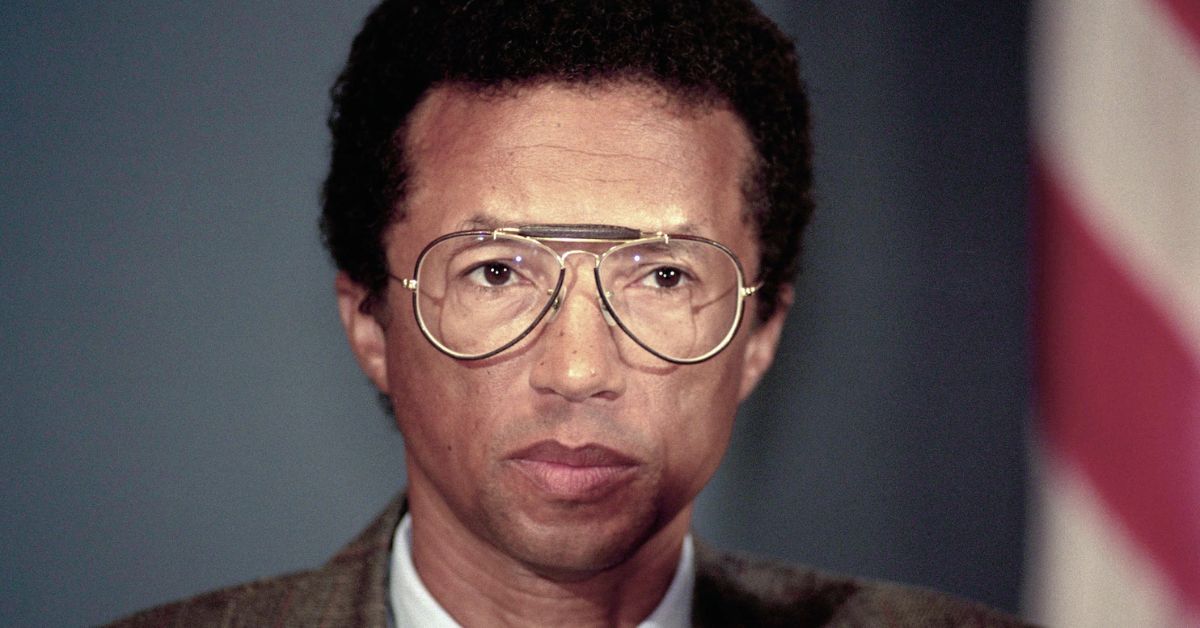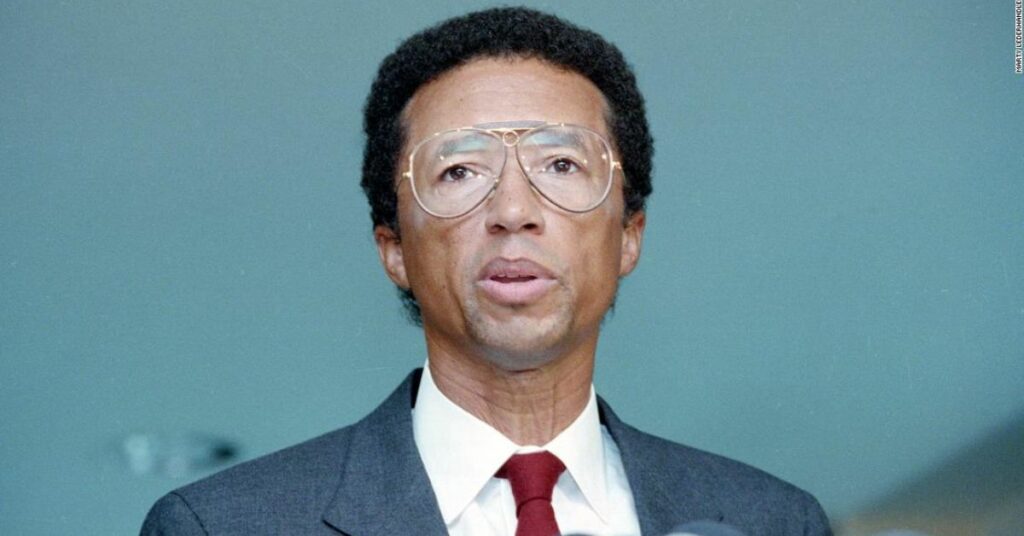Arthur Ashe was best known for his success in tennis, but it was his activism off the court that made him stand out. Ashe was a loud voice for civil rights when he wasn’t breaking barriers in tennis, which was one of the most white sports at the time. In 1985, he was arrested for protesting against apartheid outside the South African embassy.
The documentary “Citizen Ashe” will be shown for the first time on CNN on June 26 at 9 p.m. ET. It looks at Ashe’s life as a tennis player and an activist, but his work for civil rights isn’t the only thing he’s known for. Which one? His work to fight HIV/AIDS.
Ashe Became One Of The Most Well-known People With Hiv
It is suspected that Ashe caught HIV after a blood transfusion that was performed in preparation for an open-heart operation. Ashe found out about his status in 1988.
During that historical period, HIV/AIDS carried a lot of social stigma. And despite the fact that he had already stopped playing tennis eight years before, Ashe decided to keep his condition a secret.
That is, until 1992, when USA Today phoned him and told him the publication was ready to publish a breaking news item. As a result, Ashe decided to come forward on April 8 during a press conference with his wife.
Eric Allen Hall, an associate professor at Northern Illinois University and author of “Arthur Ashe: Tennis and Justice in the Civil Rights Era,” stated that the responses were, for the most part, favorable. During that time period, Ashe was a well-liked figure, and a lot of people stood by his side. According to Hall, he not only had contacts all over the world but also supported things, served on the boards of organizations, and had even published a book. After the news broke, the tennis great received a phone call from former President George H.W. Bush, a personal friend of his.
“He was a squeaky clean figure, so it was hard to look at him and think ‘Oh, he deserves it because X, Y, and Z,’ like many folks would say when they would find out that somebody gay had AIDS, for instance, or a drug user had AIDS,” Hall said. “He was the ideal person to destigmatize the disease.”
It is suspected that Ashe caught HIV after a blood transfusion that was performed in preparation for an open-heart operation. Ashe found out about his status in 1988.
During that historical period, HIV/AIDS carried a lot of social stigma. And despite the fact that he had already stopped playing tennis eight years before, Ashe decided to keep his condition a secret.
That is, until 1992, when USA Today phoned him and told him the publication was ready to publish a breaking news item. As a result, Ashe decided to come forward on April 8 during a press conference with his wife.
Eric Allen Hall, an associate professor at Northern Illinois University and author of “Arthur Ashe: Tennis and Justice in the Civil Rights Era,” stated that the responses were, for the most part, favorable. During that time period, Ashe was a well-liked figure, and a lot of people stood by his side. According to Hall, he not only had contacts all over the world but also supported things, served on the boards of organizations, and had even published a book. After the news broke, the tennis great received a phone call from former President George H.W. Bush, a personal friend of his.
“It was important to have two Black major international global figures come out and not only have to deal with the horror of being infected with the virus, but also use their platform to continue to change the narrative around the virus,” Perry said.

Ashe Used His Fame To Bring Attention To HIV/AIDS
Ashe became determined to change the way people talk about HIV/AIDS after he told the world he had it. Hall said that Ashe was the kind of person who would dive into issues and learn a lot about them so that when he talked about them, he could do so with authority.
He did this with South Africa. For example, he put the country in a Catch-22 situation when it refused to give Ashe a visa. This forced the tennis world to talk about apartheid. He did the same thing with HIV/AIDS. Hall said that Ashe read a lot of academic medical literature, which was sometimes hard to understand, and became an expert on AIDS, how to treat AIDS, and the health care system.
Health care reform was one of his biggest goals at the government level. He was honest about how hard it was to get early AIDS treatments like AZT and how expensive and hard to get they were. He was determined to make it easier for people with AIDS or any other illness to get the coverage they needed with as little red tape as possible.
“Many, many athletes were activists, but I don’t think there were any as well read and as well informed as he was,” Hall said.
He then started the Arthur Ashe Foundation for the Defeat of AIDS, which, according to Hall, has promised to give 50% of its money to countries outside the US that are fighting AIDS. Hall said that Ashe kept appearing on radio and TV, going to tennis tournaments, and running tennis clinics even as his illness got worse. In 1992, he spoke at the World Health Organization’s World AIDS Day, where he called for more money for AIDS research.
He was never afraid to talk about the disease, no matter what. Hall said that at some events, tennis lessons were given along with messages about preventing AIDS. These messages talked about safe sex and other ways to live a healthy life.
Perry said that all of this happened when the US was a very socially conservative country. Many people were still surprised that Ashe kept making public appearances even though he had HIV. This was especially true since he kept fighting for other causes, like how Haitian refugees were treated, for which he was arrested outside the White House in 1992.
“And the fact that both Ashe and Johnson, two of the most high profile people with AIDS, were also sports stars certainly helped”, Perry said.
“After both of them came out with their diagnosis, it became a federal agenda item in the presidential campaign in 1992; health care became a significant issue that helped propel Clinton’s first time,” he said. “And so certainly I would say that the impact of Arthur Ashe made up much of what we saw in terms of policy and investment in policy reform around HIV.”
The Centers for Disease Control and Prevention say that between 1981 and 1990, more than 100,000 Americans died from AIDS. Now, most people think that the federal government’s response to the disease at the time wasn’t enough.
Ashe was known around the world, but the people who were most at risk were not. Even though people were dying just blocks away from him in New York, they couldn’t get as much attention as he did.
“I think he felt an obligation to continue,” Perry said. “He’d been a pioneer in race and social relations for decades already.” Even though Ashe died almost 30 years ago, there is still work to be done. There are still differences in who gets HIV based on race, and 35 states have laws that make HIV exposure a crime.
Perry said that doctors and nurses still don’t know enough about the disease. Perry, who has HIV, lived in Starkville, Mississippi, for three years. He said that to get better care, he had to drive for two hours, which is something that not everyone in the area can do.
“We need to continue to do the work in urban and rural spaces to eliminate the disease, but certainly, at the very least, hopefully we can commit to eliminating the disparity that exists between racial groups,” he said.
I hope you like our article. If this is the case, we would appreciate it if you would share your insightful ideas in the comments below. You may get even more of these updates by adding News Conduct to your collection of bookmarks.




